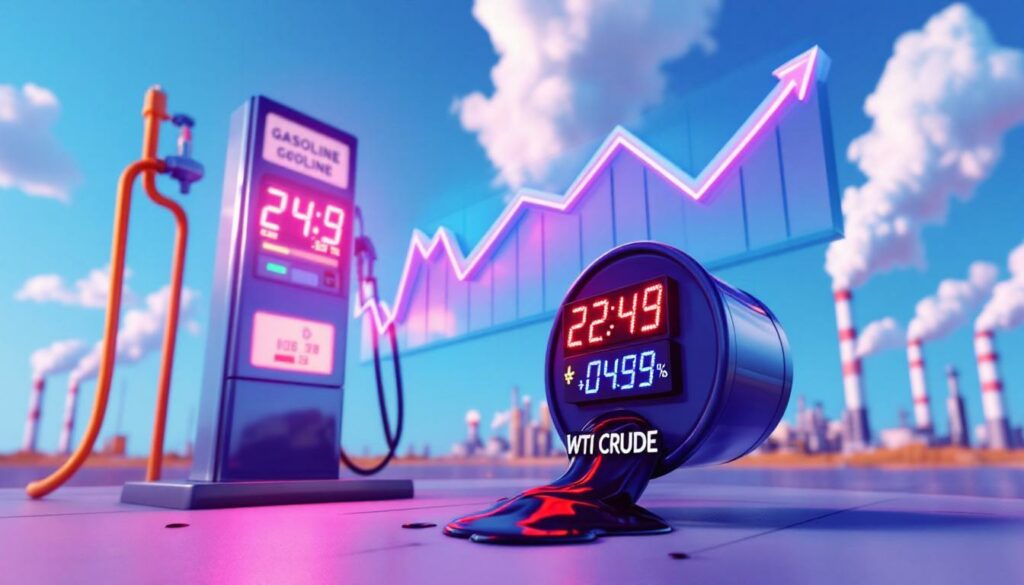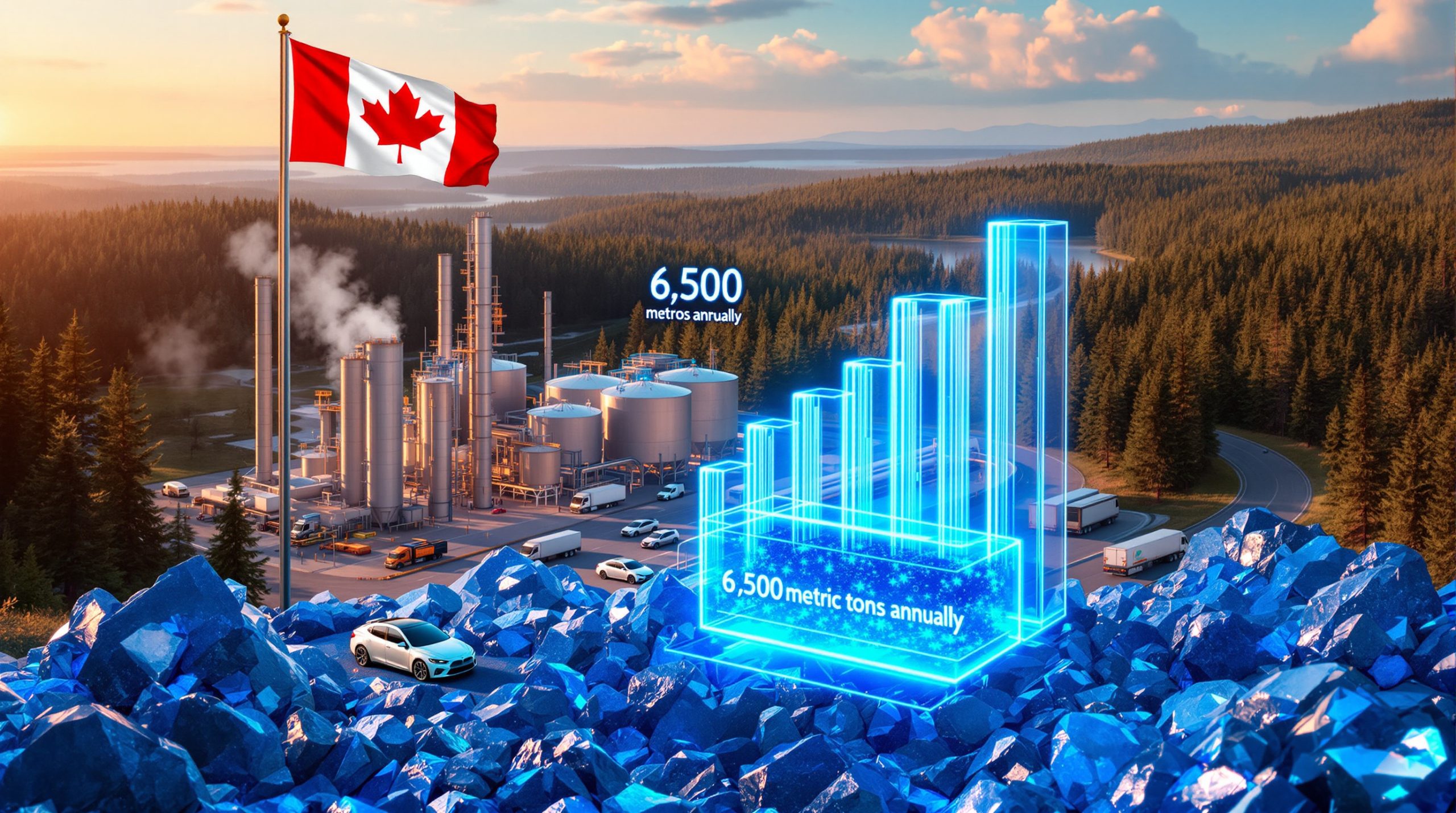Why Are Gasoline Prices Rising While Oil Benchmarks Fall?
The curious phenomenon of rising gasoline prices alongside falling crude oil benchmarks has left many consumers bewildered at the pump. As of mid-July 2025, gasoline futures have climbed 0.81% to $2.183 per gallon, while WTI crude has dropped 0.49% to $66.65 per barrel and Brent crude has decreased 0.27% to $69.02 per barrel. This counterintuitive movement challenges the conventional wisdom that fuel prices should follow crude oil trends.
The Refining Bottleneck Effect
One primary culprit behind this price divergence is the current state of refining capacity. According to the Energy Information Administration (EIA), U.S. refinery utilization rates stood at 89.6% in June 2025, significantly below the previous year's peak levels. This capacity constraint creates a bottleneck in the supply chain that puts upward pressure on gasoline prices regardless of crude oil movements.
"The refining sector is the critical chokepoint between crude oil and consumer fuel prices. When refineries operate near capacity limits, even small demand increases can trigger disproportionate price responses." — American Fuel & Petrochemical Manufacturers statement, June 2025
Seasonal maintenance schedules further compound this issue. U.S. spring refinery maintenance peaked in April 2025, temporarily reducing output by 1.8 million barrels per day compared to January levels. These planned downtimes, essential for equipment safety and regulatory compliance, create predictable but impactful supply constraints.
How Refining Capacity Impacts Gasoline Prices
Bottlenecks in Production
Global refining capacity has not kept pace with demand growth in recent years. Industry analysts estimate a worldwide refining capacity shortfall of approximately 2.5 million barrels per day in 2025. This structural deficit means that refined products like gasoline operate in a tighter market than crude oil itself.
The impact becomes particularly acute when:
- Seasonal demand spikes occur
- Unplanned refinery outages happen
- Specific fuel formulations are required by regional regulations
Maintenance Schedules and Seasonal Transitions
Refineries undergo regular maintenance known as "turnarounds" that temporarily reduce production capacity. These schedules often coincide with seasonal fuel formulation changes, creating a double impact on available supply.
Spring and fall transitions between winter and summer-grade gasoline formulations require refineries to temporarily reduce output while switching production systems. During these transition periods, the reduced supply creates a buffer that keeps prices elevated even when crude costs decline.
What Factors Drive the Price Divergence?
The Refining Margin Factor
The "crack spread" — the difference between crude oil prices and refined product prices — tells an important story about market dynamics. This spread has widened dramatically to $28.50 per barrel in July 2025 compared to $22.10 per barrel in 2024, according to CME Group futures data.
This mathematical relationship is calculated as:
- (Value of refined products) – (Price of crude oil) = Crack spread
A widening crack spread indicates refiners are capturing higher margins on each barrel processed, which directly contributes to the disconnect between falling crude prices and rising gasoline costs.
Regional Supply and Demand Imbalances
Transportation infrastructure constraints create regional price disparities that may not reflect global crude trends. For example, Colonial Pipeline capacity limitations have contributed to a 7% year-over-year drop in PADD 1 (East Coast) gasoline inventories as of July 2025.
These regional imbalances create localized price pressures that can override broader market trends. When storage tanks run low in a specific region, local prices rise regardless of global crude oil movements.
How Do International Factors Affect Domestic Prices?
Global Market Influences
U.S. gasoline is increasingly tied to global markets through exports. Data from the EIA shows that U.S. gasoline exports reached 1.2 million barrels per day in June 2025, an 18% increase compared to the previous year. This strong international demand diverts supply that would otherwise serve domestic markets.
Geopolitical tensions, particularly in shipping channels like the Strait of Hormuz, add risk premiums to refined products. Industry analysis from Vortexa suggests that recent tensions have added $3-5 per barrel to refined products via increased insurance premiums and shipping costs.
Currency and Trade Considerations
The strength of the U.S. dollar plays a significant role in global oil pricing. The Federal Reserve reports that the USD Index rose 4.2% in Q2 2025, making dollar-denominated commodities more expensive for foreign buyers. This currency effect can create divergent price movements between crude oil and refined products.
Trade flow disruptions, including sanctions and shipping regulations, can affect gasoline supplies more immediately than crude oil markets due to the more complex logistics involved in moving refined products. The ongoing US-China trade war effects have created additional uncertainty in energy markets globally.
What's Happening with OPEC+ Production?
Recent Production Decisions
OPEC+ production data reveals an important piece of the price puzzle. According to OPEC's Monthly Oil Market Report (MOMR) from July 15, 2025, the producer group increased output by 349,000 barrels per day in June, falling short of their planned 411,000 barrels per day target.
This underproduction has implications for global supply-demand balances that can affect refined product markets differently than crude markets. When production targets aren't met, market expectations shift, influencing pricing along the entire supply chain. Furthermore, the anticipated US oil production decline in late 2025 could exacerbate these imbalances.
Saudi Arabia's Production Anomalies
A particularly interesting development involves Saudi Arabia's production reporting. Official OPEC data shows Saudi production of 9.752 million barrels per day in June, but market supply of only 9.360 million barrels per day — a significant discrepancy of nearly 400,000 barrels.
This suggests strategic inventory management by the kingdom that could affect market perceptions differently across the petroleum product spectrum. Saudi Arabia's actions often signal broader OPEC+ policy intentions, influencing both crude and product markets.
Why Do Taxes and Regulations Matter?
Regulatory Compliance Costs
Environmental regulations impose significant costs on refiners that ultimately reach consumers. The American Petroleum Institute estimates that Tier 3 gasoline standards add approximately $0.08 per gallon to refining costs, a fixed expense that doesn't decrease when crude prices fall.
Renewable Fuel Standard (RFS) compliance costs have nearly doubled, with Renewable Identification Number (RIN) prices averaging $1.52 in Q2 2025 compared to $0.91 in the same period of 2024. These compliance costs remain relatively stable even as crude oil prices fluctuate.
Tax Impacts on Final Prices
Gasoline taxes vary dramatically by location, creating baseline price differences across regions. State taxes range from just $0.15 per gallon in Alaska to $0.61 per gallon in California, according to EIA data from January 2025.
Most importantly, these taxes are fixed amounts rather than percentages, meaning they represent a larger proportion of the final price when crude oil costs fall. This tax structure inherently dampens the consumer benefit of lower oil prices. Additionally, the US economy & tariffs relationship has created additional complexity in energy pricing structures.
How Do Consumer Behaviors Influence Pricing?
Seasonal Demand Patterns
The traditional summer driving season creates predictable demand increases that support higher prices. The EIA's Short-Term Energy Outlook reports that U.S. gasoline demand peaked at 9.8 million barrels per day in July 2025, putting additional pressure on already constrained refining capacity.
Holiday travel periods create short-term demand spikes that retailers anticipate. Stations often maintain higher margins during these periods knowing that consumers are less price-sensitive when holiday travel plans are involved.
Price Elasticity Considerations
Academic research consistently shows that gasoline demand is highly inelastic in the short term. Studies by Hughes et al. found short-term gasoline demand elasticity of just -0.02, meaning a 10% price increase reduces consumption by only 0.2%.
This consumer insensitivity to price changes allows retailers to maintain higher margins during periods of falling crude prices, knowing that sales volumes will remain relatively stable despite elevated prices. Recent oil price stagnation analysis suggests this trend may continue.
Brand loyalty and convenience also factor into pricing strategies. A UC Davis study found that Chevron stations command a premium of approximately $0.15 per gallon in California markets, demonstrating consumers' willingness to pay more for perceived quality or convenient locations.
What Should Consumers Expect Next?
Short-Term Price Projections
Industry analysts at Goldman Sachs Commodities Research predict gasoline crack spreads will remain above $25 per barrel through August 2025, suggesting the disconnect between crude and gasoline prices may persist through the remainder of summer.
The combination of tight refining capacity, strong seasonal demand, and ongoing international disruptions creates a challenging environment for price relief in the immediate future. Moreover, tariffs impact on markets could further complicate price forecasts.
Long-Term Market Adjustments
Market forces should eventually bring gasoline prices back into traditional alignment with crude oil costs. The International Energy Agency (IEA) reports planned refinery expansions totaling 800,000 barrels per day of new capacity by 2027, which should help ease the refining bottleneck.
"Market imbalances between crude and products tend to self-correct over time as investment flows to areas of higher returns. The current elevated refining margins will likely attract capital that ultimately increases capacity and narrows spreads." — IEA Oil 2025 Report
How Can Consumers Mitigate Rising Fuel Costs?
Practical Fuel-Saving Strategies
Simple vehicle maintenance can significantly offset higher prices at the pump. According to the U.S. Department of Energy's Fuel Economy Guide, proper tire inflation alone can improve mileage by approximately 3%.
Other effective strategies include:
- Regular air filter replacement (2-6% efficiency improvement)
- Engine tuning (4% average fuel savings)
- Using manufacturer-recommended motor oil (1-2% efficiency gain)
- Removing excess weight from vehicles (2% savings per 100 pounds removed)
Driving habits also significantly impact fuel consumption. Aggressive driving (rapid acceleration and braking) can lower highway fuel economy by up to 30% and city mileage by 40%, according to DOE research.
Alternative Transportation Options
Public transportation offers substantial savings for commuters facing high gasoline prices. The American Public Transportation Association's Transit Savings Report indicates that commuting via public transit saves approximately $850 per month compared to driving in major metropolitan areas.
Carpooling and ride-sharing have become increasingly accessible options. Research from Uber's Carpool Impact Study shows that shared rides reduce per-person fuel costs by approximately 60% compared to individual trips.
FAQ: Understanding Gasoline Price Dynamics
Why don't gasoline prices fall immediately when crude oil prices drop?
Retail gasoline prices typically lag crude oil changes by 2-4 weeks due to the supply chain structure. Stations purchase fuel that was refined from crude oil bought weeks earlier, creating an inherent delay in price transmission. Additionally, retailers may strategically delay price reductions to maintain margins during transitional periods.
How much of the gasoline price is actually for the fuel itself?
According to the EIA's Gasoline Components Breakdown from May 2025, the average U.S. gasoline price consists of:
- Crude oil: 55%
- Refining costs and profits: 14%
- Taxes: 16%
- Distribution and marketing: 15%
This breakdown explains why a 10% drop in crude oil prices translates to only about a 5.5% reduction at the pump, assuming all other factors remain constant.
Do all regions experience the same relationship between crude oil and gasoline prices?
Regional factors create significant variations in how closely gasoline prices track crude oil benchmarks. EIA data shows that PADD 5 (West Coast) prices average $0.85 per gallon above Gulf Coast prices due to higher taxes, stricter environmental regulations, and relative isolation from the national pipeline network.
Can refiners manipulate gasoline prices independently of crude oil costs?
While refiners have some pricing power in the short term, competitive market forces limit sustained price manipulation. The Federal Trade Commission's 2024 Gasoline Market Study found "no evidence of sustained anticompetitive pricing" in U.S. refining markets. However, concentrated regional markets with limited refining capacity can experience temporary pricing anomalies during supply disruptions.
Conclusion: The Complex Relationship Between Crude Oil and Gasoline Prices
The counterintuitive movement of rising gasoline prices alongside falling crude oil benchmarks stems from multiple interconnected factors across the supply chain. Refining constraints, seasonal demand patterns, international market forces, and regulatory requirements all contribute to this price divergence.
While frustrating for consumers, these market dynamics reflect the complex reality of modern fuel markets where crude oil is just one component of the final price equation. Understanding these factors can help consumers make informed decisions about fuel purchases, vehicle choices, and transportation alternatives during periods of price volatility.
Disclaimer: This analysis represents current market conditions as of July 2025. Energy markets are inherently volatile and subject to rapid changes due to geopolitical events, weather disruptions, and economic shifts. Consumers should monitor local market conditions when making financial decisions related to fuel costs.
Ready to Receive Real-Time ASX Mining Discovery Alerts?
Discover how the proprietary Discovery IQ model instantly notifies investors about significant mineral discoveries on the ASX, turning complex data into actionable investment opportunities. Explore why major discoveries can lead to substantial returns by visiting Discovery Alert's dedicated discoveries page and begin your 30-day free trial today.




